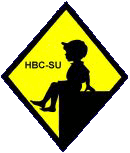
Uniform regulations at English schools have varied over time. Uniform regulations during the first half of the 20th century were primarily an aspect of private education. This is because it was the private schools that had uniforms. State primary schools did not generally have uniorms. There may have been regulations about clothing, but we have few details about those requirements at this time. A relatively small number of children went on to secondary school after primary school. The schools like grammar (selective secondary) schools generally followed dress styles at the public schools. Major reforms passed during World war II were slowly implemented after the War. Gradually primary schools adopted simple uniforms. More children began attending state secondary schools after the War. The schools had uniforms and often very strict uniform regulations. In recent years the uniform has generally become less elaborate and formal and the regulations associated with it are usually less complicated than in earlier years. Even so, most secondary scgools continue to require uniforms.
Uniform regulations at English schools have varied over time. Uniform regulations during the first half of the 20th century were primarily an aspect of private education. This is because it was the private schools that had uniforms. State primary schools did not generally have uniorms. There may have been regulations about clothing, but we have few details about those requirements at this time.
A relatively small number of children went on to secondary school after primary school. The schools like grammar (selective secondary) schools generally followed dress styles at the public schools.
Major reforms passed during World War II were slowly implemented after the War. Gradually primary schools adopted simple uniforms. More children began attending state secondary schools after the War. The schools had uniforms and often very strict uniform regulations.
Many of the new peimary schools created as part of the educational reforms adopted basic school uniforms, commonly grey shirts, sweaters, and shorts. Most did not rquire blazers and caps, but the Anglican schools often did a wll as the Catholic schools.
The general trend in school uniform regulationduring the 1980s was for a more casual uniform. Many primary schools still had uniforms requirements, although some began allowing the older boys to wear long trousers. The same trend occurred at private prep schools. The pattern was somewhat mixed. Some allowed all the boys to wear long trousers. Others allowed the older boys to wear longs. Some schools made shorts a seasonal item. Most prep schools dropped caps as paet of the uniform. Some kept them, but only for the younger bota
The uniform during the 1990s became less elaborate and formal and the regulations associated with it are usually less complicated than in earlier years. Even so, most secondary scgools continue to require uniforms.
British readers have provided some information on school uniform trends during the 2000s. Some observers tell us that some of the trends toward more informal, casual school wear have been reversed. We are not yet sure how pervasive these trends are. One trend that appears to have become increasingly prevalent is seasonal uniform rules. Perhaps the most notable trend during the 2000s has been the appearance of religious issues. Until the 1990s such religious issues had been a minor matter. These issues have also surfaced in France and other European countries.
Related Chronolgy Pages in the Boys' Historical Web Site
[Main Chronology Page]
[The 1880s]
[The 1930s]
[The 1940s]
[The 1950s]
[The 1960s]
[The 1970s]
[The 1980s]
Related Style Pages in the Boys' Historical Web Site
[Main school uniform page]
[Main country page]
[Long pants suits]
[Short pants suits]
[Socks]
[Eton suits]
[Jacket and trousers]
[Blazer
[School sandals]
Navigate the Boys' Historical Clothing School Uniform Pages
[Main School Uniform Regulation Page]
[Australia]
[England]
[France]
[Germany]
[Italy]
[Japan]
[New Zealand]
[Scotland]
[United States]
Navigate the Boys' Historical Clothing Web Page
[Introduction]
[Activities]
[Biographies]
[Chronology]
[Cloth and textiles]
[Clothing styles]
[Countries]
[Topics]
[Bibliographies]
[Contributions]
[FAQs]
[Glossaries]
[Images]
[Registration]
[Tools]
[Boys' Clothing Home]
